Spending as much time as I do studying / building SaaS products, you tend to see patterns emerge. I’m going to share one today for how to bootstrap a 0 -> 1 SaaS offering in 3 steps.
(Yes, I know the diagram looks like a barn - I struggled with how to visualize it.)
My basic thesis here is that many (all?) SaaS products are fundamentally about re-imagining a workflow that is sub-optimal for some reason; if you can figure how to simplify the creation flow for the core user, and create a consumption bridge for adjacent users, you have a product powered by an insight that lets you skip steps. Bear with me as a I try to make “skip step SaaS” a thing.
When you’re looking to identify a multi-* process, you can take the tactic of exploring workflows that are multi-step, multi-tool, multi-user, or multi-phase. The aha! you bring to the problem is to have a unique point of view on how / why multi-* can be collapsed into a single-* (a single step, a single tool, a single user, a single phase). How would you even go about sussing out such opportunities? Just observe users in their work environments - look for the inefficiencies in the workflow or the toolchain that distract from their actual job to be done. In other words, watch the bartender.
The opportunity you identified in the first step will dictate how you simplify the end-to-end flow in your subsequent step; a multi-step process is simplified by making it single-step, a multi-user flow is simplified by creating a shared space, a manual input/output is simplified through automation, etc. How do you know what dimension is worth simplifying? This is where your point of view comes in again - you have a hypothesis that by leveraging a better solution for a piece of the workflow, you are going to reduce the effort on the part of the user by 10x. Users in a particular domain are always evolving - either core users are up-leveling their sophistication or new users with nascent aptitude are emerging - and you need to create new levels of abstraction to meet these users where they are.
The last step in bootstrapping a SaaS product is bridging the collaboration divide between core and adjacent users. Work actually happens across teams, across departments, across organizations…but because the hierarchical org chart is our default view of the user population, we tend to miss this nuance. So how do you find these seams in the collaboration experience that you can superglue with your service? This is only half-joking - look at the use cases for spreadsheets. If folks are exporting a CSV list from one app and bringing it to another app (or worse manually munging data), that’s an opportunity for a latent collaboration flow that can onboard an entirely new user cohort.
One additional thought on this skip-step-SaaS playbook that I’ll explore in future posts is the creator/consumer interplay. The more valuable part of a SaaS product, over time, is usually either the creation flow or the consumption flow - it tends to follow an 80/20 split - but how do you actually know early on which will be your differentiator?
Note: this is usually the point in my articles where I leave the reader to ponder…but today I actually wanted to share my own thinking. I pressure tested this recipe against some SaaS solutions that I’ve used and tried to articulate how they addressed each step.
I’d love to hear from readers on whether they agree / disagree with this framing, and potentially learn about SaaS products that break the mold - please chime in via comments👇. And if you enjoyed this post, please consider subscribing.
further reading / references
immersing yourself in CX loops is one of the best ways (in my opinion) to identify opportunities to generate value for your users in a way that is real and reliable
I used the term point of view multiple times in this post - having one and pitching it are critical in order to have a viable business
I’ve shared a different recipe for SaaS-based company building before - this post focused on the 0 -> 1 motion, while this one is about repeatability (1 -> n)
if you’re interested in more mental model for 0 -> 1 thinking, check out The Product Tree
here are more detailed reads on the creator flow (Enterprise Consumerization Entry) and the consumer flow (Span vs Split Personas)
the idea that “Export to Excel” is a top-3 button in every SaaS app fascinates me
if “the hierarchical org chart is our default view of the user population” bothers you, listen to Conway’s Conundrum for quick ideas on how to break the anti-pattern
childish drawing / interpretation


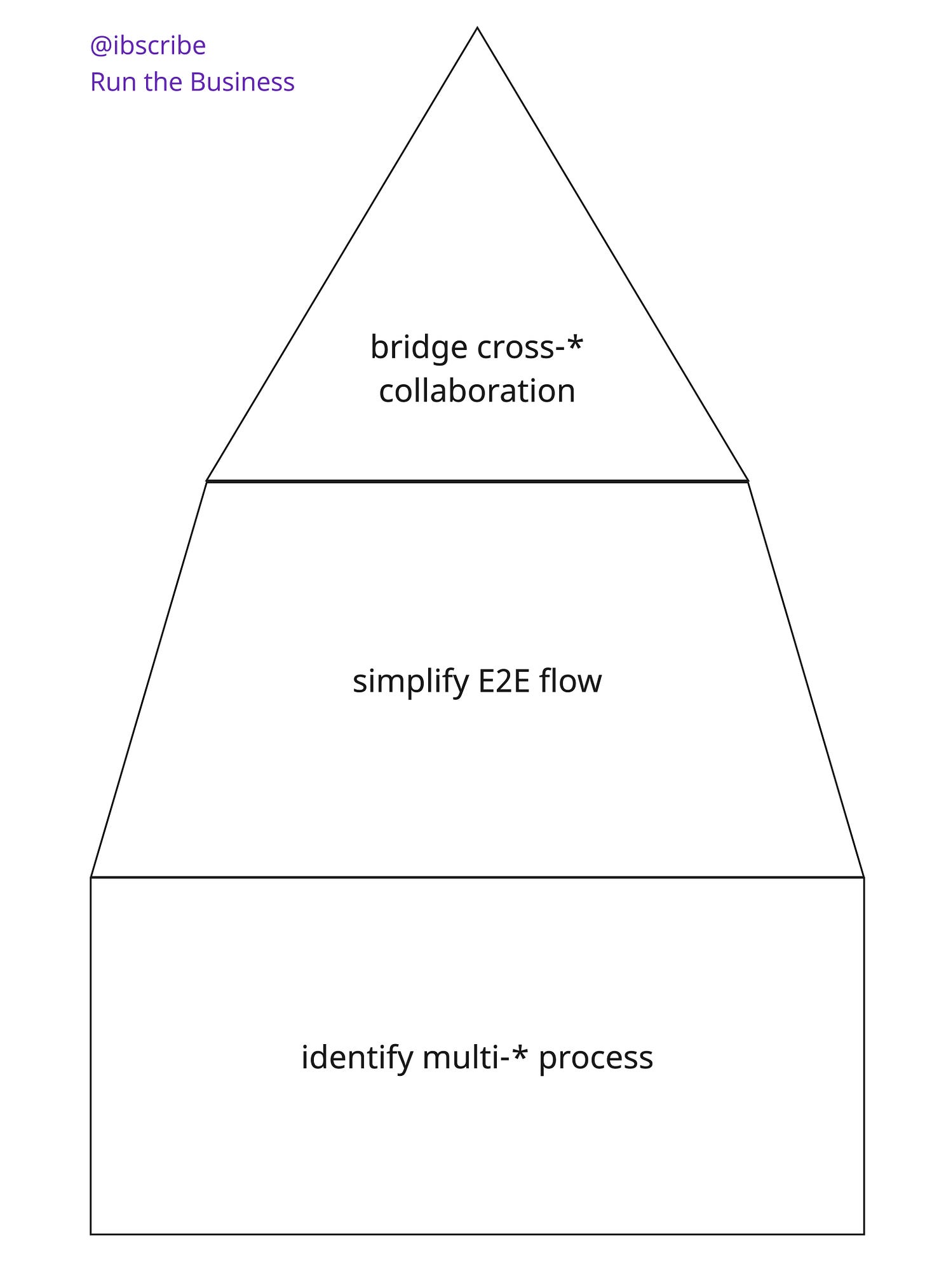
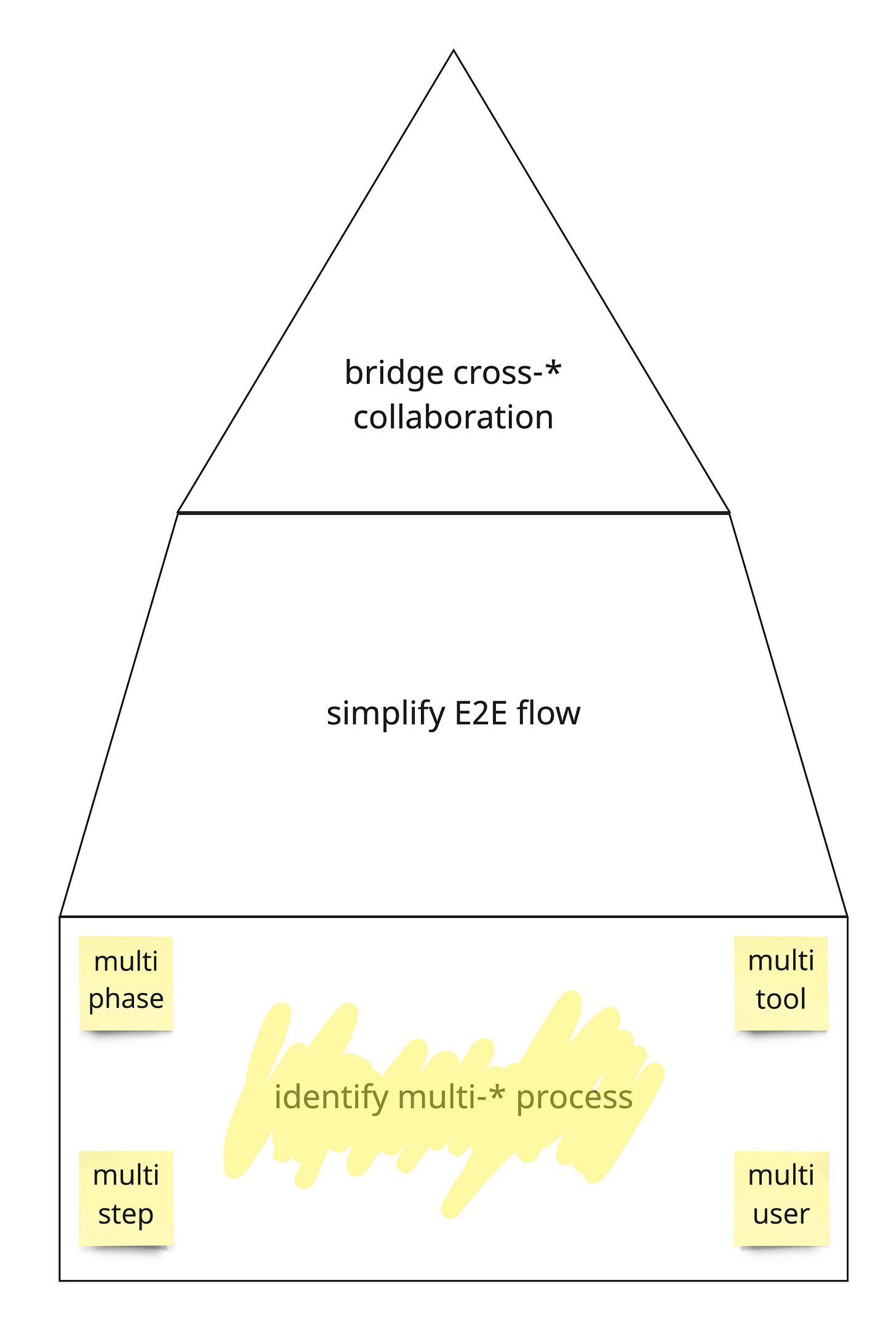
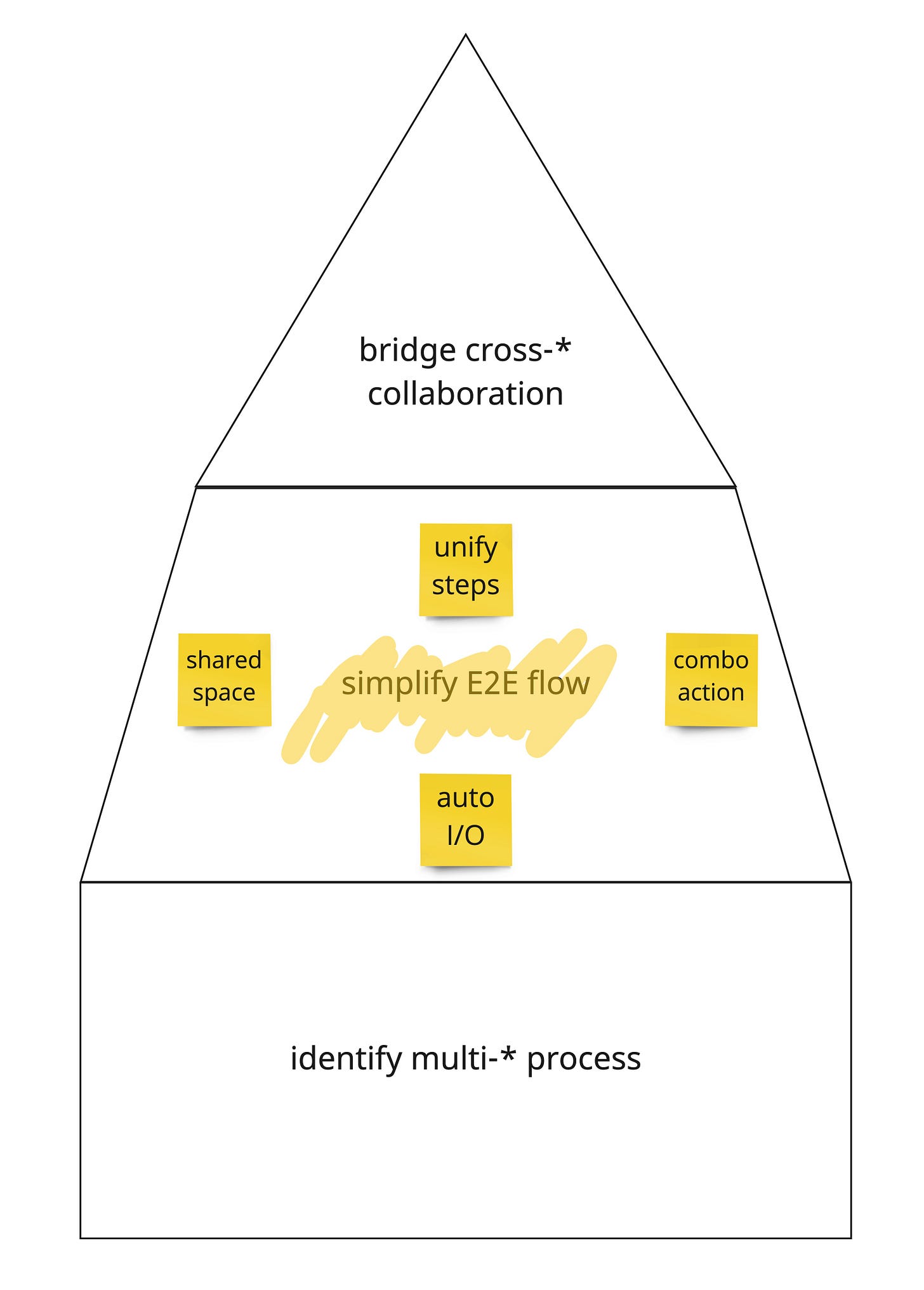
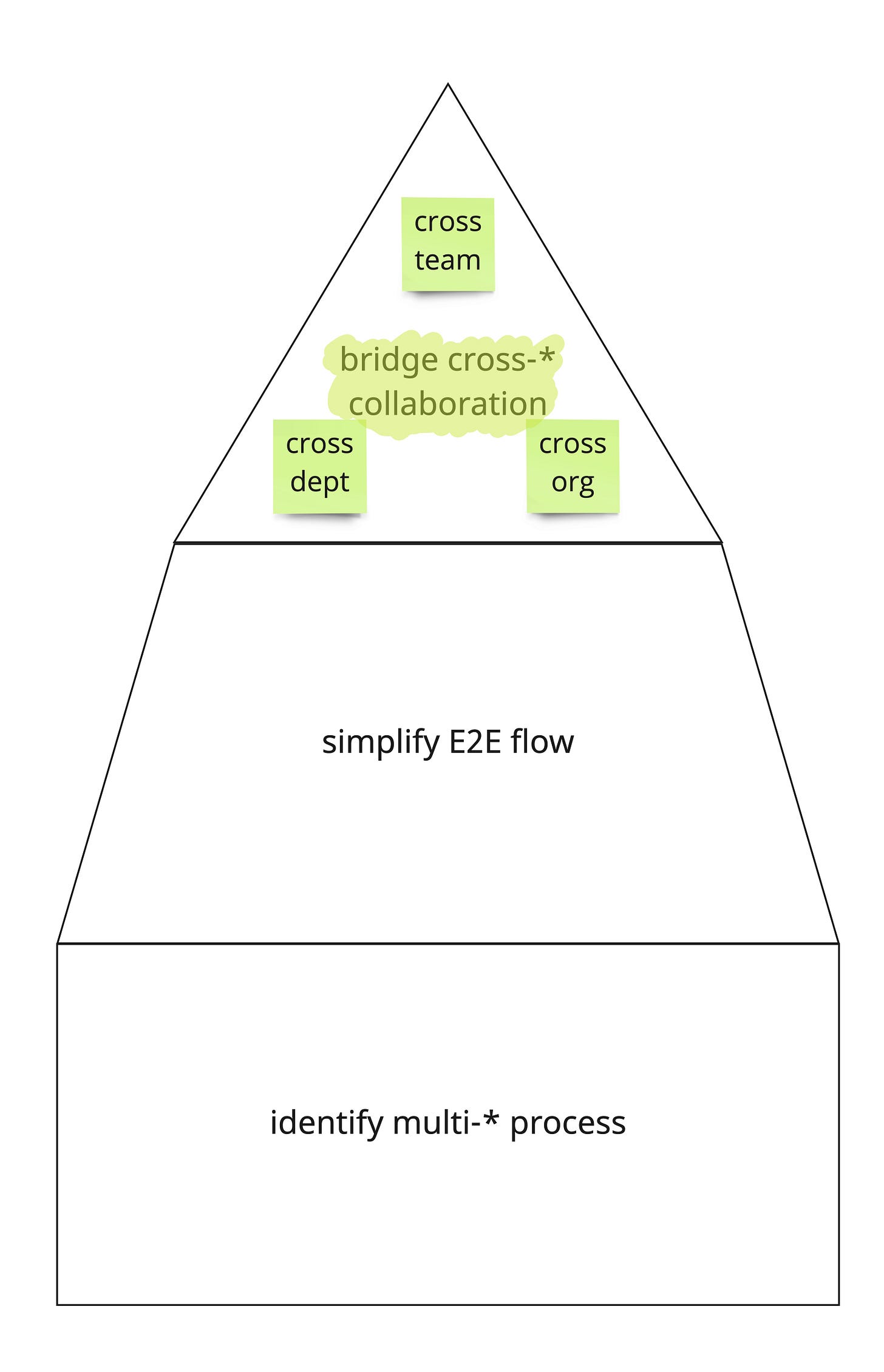
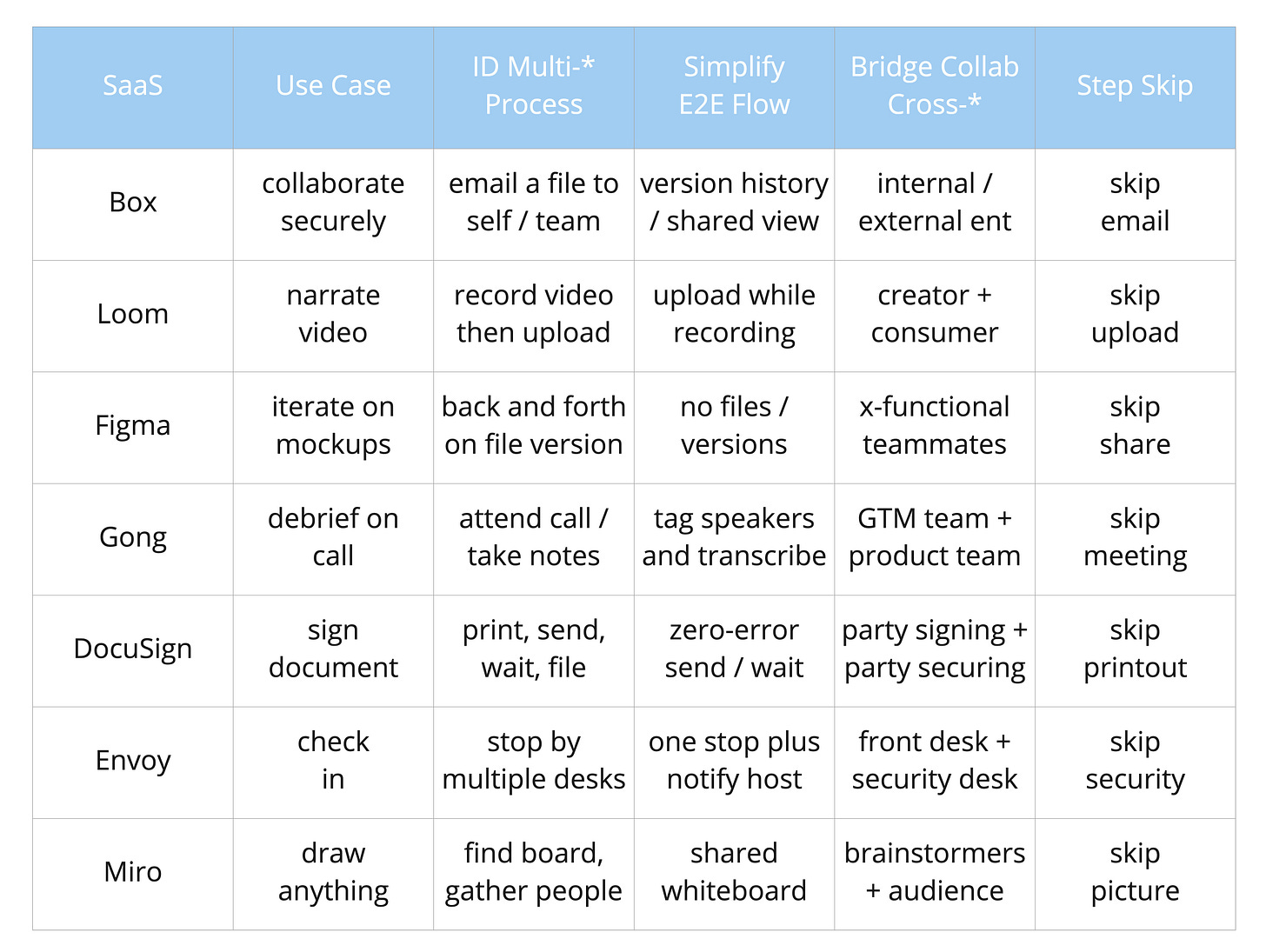

You forgot the "export to excel" button on your handy table :). Seems like the core value then is saving time and removing process friction. And maybe another element to consider is the value of the time saved -- if it saves time for grad students, not as valuable as time for account execs.
This is really interesting. Do you think this model applies equally to the transaction, productivity and attention games?